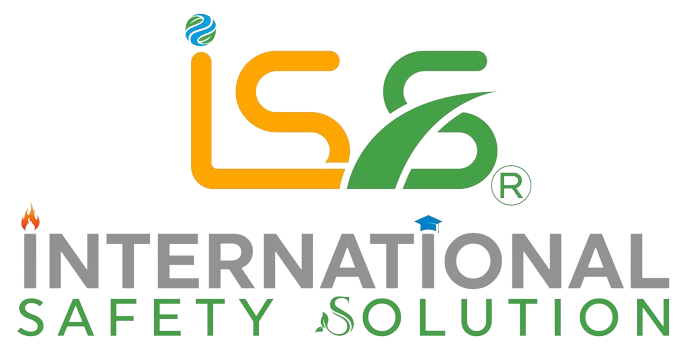Common Causes of Fire Accidents in Industrial Settings and How to Prevent Them
Fire accidents in industrial environments can be devastating, not only causing significant damage to property but also putting lives at serious risk. Understanding the common causes of these incidents and implementing effective prevention strategies is essential for ensuring workplace safety, compliance, and business continuity.

1. Electrical Hazards
Faulty wiring, overloaded circuits, and malfunctioning electrical equipment are among the leading causes of industrial fires. Outdated or poorly maintained electrical systems can overheat and spark fires, especially in high-demand environments such as factories and warehouses.
Prevention Tip:
Conduct regular inspections of electrical systems, ensure proper installation by qualified personnel, and avoid overloading circuits. Use certified equipment and maintain it regularly.

2. Flammable Materials and Chemicals
Industries that handle combustible materials—such as oils, gases, solvents, and dust—face a constant fire risk. Improper storage, spills, or exposure to heat sources can easily trigger a blaze.
Prevention Tip:
Store flammable substances in designated, ventilated areas with proper labeling. Implement strict protocols for handling and disposing of hazardous materials, and train staff on chemical safety.
3. Human Error and Negligence
Improper use of equipment, smoking in restricted areas, ignoring safety protocols, and lack of awareness often contribute to fire outbreaks.
Prevention Tip:
Conduct regular fire safety training, enforce safety rules strictly, and promote a culture of responsibility and vigilance among employees.
4. Poor Housekeeping
Accumulated waste, cluttered workspaces, and blocked emergency exits can worsen fire situations and obstruct evacuation.
Prevention Tip:
Maintain cleanliness, dispose of waste materials regularly, and keep escape routes clear. Conduct daily inspections to ensure tidiness and accessibility.
5. Hot Work Activities
Welding, cutting, grinding, and other hot work activities can generate sparks and heat, posing fire hazards if performed near flammable materials.
Prevention Tip:
Use fire blankets, remove combustible items from the area, and have fire extinguishers nearby. Assign fire watchers and follow hot work permit procedures.
6. Lack of Fire Detection and Suppression Systems
A delayed response due to missing or non-functional fire alarms and suppression systems can turn a minor incident into a major disaster.
Prevention Tip:
Install and regularly test fire alarm systems, smoke detectors, sprinklers, and fire extinguishers. Ensure emergency systems are accessible and functional.
7. Equipment Malfunction
Overheated machinery, friction, and mechanical failures are potential ignition sources in industrial settings.
Prevention Tip:
Schedule routine maintenance and inspections. Immediately repair or replace malfunctioning equipment to reduce fire risks.
Conclusion
Fire safety in industrial environments is not just about compliance—it’s about protecting lives, assets, and operations. By understanding the root causes and taking proactive steps to mitigate risks, companies can foster a safer and more efficient workplace.
Fire accidents in industrial environments can be devastating, not only causing significant damage to property but also putting lives at serious risk. Understanding the common causes of these incidents and implementing effective prevention strategies is essential for ensuring workplace safety, compliance, and business continuity.
1. Electrical Hazards
Faulty wiring, overloaded circuits, and malfunctioning electrical equipment are among the leading causes of industrial fires. Outdated or poorly maintained electrical systems can overheat and spark fires, especially in high-demand environments such as factories and warehouses.
Prevention Tip:
Conduct regular inspections of electrical systems, ensure proper installation by qualified personnel, and avoid overloading circuits. Use certified equipment and maintain it regularly.
2. Flammable Materials and Chemicals
Industries that handle combustible materials—such as oils, gases, solvents, and dust—face a constant fire risk. Improper storage, spills, or exposure to heat sources can easily trigger a blaze.
Prevention Tip:
Store flammable substances in designated, ventilated areas with proper labeling. Implement strict protocols for handling and disposing of hazardous materials, and train staff on chemical safety.
3. Human Error and Negligence
Improper use of equipment, smoking in restricted areas, ignoring safety protocols, and lack of awareness often contribute to fire outbreaks.
Prevention Tip:
Conduct regular fire safety training, enforce safety rules strictly, and promote a culture of responsibility and vigilance among employees.
4. Poor Housekeeping
Accumulated waste, cluttered workspaces, and blocked emergency exits can worsen fire situations and obstruct evacuation.
Prevention Tip:
Maintain cleanliness, dispose of waste materials regularly, and keep escape routes clear. Conduct daily inspections to ensure tidiness and accessibility.
5. Hot Work Activities
Welding, cutting, grinding, and other hot work activities can generate sparks and heat, posing fire hazards if performed near flammable materials.
Prevention Tip:
Use fire blankets, remove combustible items from the area, and have fire extinguishers nearby. Assign fire watchers and follow hot work permit procedures.
6. Lack of Fire Detection and Suppression Systems
A delayed response due to missing or non-functional fire alarms and suppression systems can turn a minor incident into a major disaster.
Prevention Tip:
Install and regularly test fire alarm systems, smoke detectors, sprinklers, and fire extinguishers. Ensure emergency systems are accessible and functional.
7. Equipment Malfunction
Overheated machinery, friction, and mechanical failures are potential ignition sources in industrial settings.
Prevention Tip:
Schedule routine maintenance and inspections. Immediately repair or replace malfunctioning equipment to reduce fire risks.
Conclusion
Fire safety in industrial environments is not just about compliance—it’s about protecting lives, assets, and operations. By understanding the root causes and taking proactive steps to mitigate risks, companies can foster a safer and more efficient workplace.





